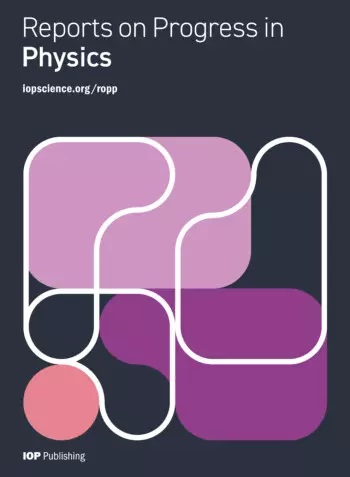用于原子、分子和固体物理中超快动力学研究的阿秒光谱学
IF 20.7
1区 物理与天体物理
Q1 PHYSICS, MULTIDISCIPLINARY
引用次数: 30
摘要
自从在极紫外光谱区首次演示产生阿秒脉冲(1 as = 10−18 s)以来,已经引入了几种测量技术,首先用于脉冲的时间表征,紧接着用于原子、分子和固体中的电子和核超快动力学的研究,具有前所未有的时间分辨率。近二十年来建立的阿秒光谱学工具,以及解释实验结果的复杂理论方法的发展,使人们能够揭示和研究以前从未观察到的物理过程,例如原子和固体的光电发射延迟,分子中电子在迅速电离后的运动(在任何显著的核运动之前),电介质中隧穿过程的时间演变,还有其他许多人。本文综述了阿秒技术在原子、分子和固体超快过程研究中的应用。由于新的光谱技术的引入和不断发展,阿秒科学正迅速朝着越来越复杂系统中耦合电子-核动力学的研究、理解和控制方向发展,研究技术越来越精确和完整。在这里,我们将回顾最常见的技术,展示原子,分子和固体的最新成果。本文章由计算机程序翻译,如有差异,请以英文原文为准。
Attosecond spectroscopy for the investigation of ultrafast dynamics in atomic, molecular and solid-state physics
Since the first demonstration of the generation of attosecond pulses (1 as = 10−18 s) in the extreme-ultraviolet spectral region, several measurement techniques have been introduced, at the beginning for the temporal characterization of the pulses, and immediately after for the investigation of electronic and nuclear ultrafast dynamics in atoms, molecules and solids with unprecedented temporal resolution. The attosecond spectroscopic tools established in the last two decades, together with the development of sophisticated theoretical methods for the interpretation of the experimental outcomes, allowed to unravel and investigate physical processes never observed before, such as the delay in photoemission from atoms and solids, the motion of electrons in molecules after prompt ionization which precede any notable nuclear motion, the temporal evolution of the tunneling process in dielectrics, and many others. This review focused on applications of attosecond techniques to the investigation of ultrafast processes in atoms, molecules and solids. Thanks to the introduction and ongoing developments of new spectroscopic techniques, the attosecond science is rapidly moving towards the investigation, understanding and control of coupled electron–nuclear dynamics in increasingly complex systems, with ever more accurate and complete investigation techniques. Here we will review the most common techniques presenting the latest results in atoms, molecules and solids.
求助全文
通过发布文献求助,成功后即可免费获取论文全文。
去求助
来源期刊

Reports on Progress in Physics
物理-物理:综合
CiteScore
31.90
自引率
0.00%
发文量
45
审稿时长
6-12 weeks
期刊介绍:
Reports on Progress in Physics is a highly selective journal with a mission to publish ground-breaking new research and authoritative invited reviews of the highest quality and significance across all areas of physics and related areas. Articles must be essential reading for specialists, and likely to be of broader multidisciplinary interest with the expectation for long-term scientific impact and influence on the current state and/or future direction of a field.
 求助内容:
求助内容: 应助结果提醒方式:
应助结果提醒方式:


